Significant seizure reductions in patients living with Dravet syndrome
EPIDIOLEX® (cannabidiol) significantly reduced convulsive seizures in patients living with Dravet syndrome
REDUCTION IN MONTHLY FREQUENCY OF CONVULSIVE SEIZURES
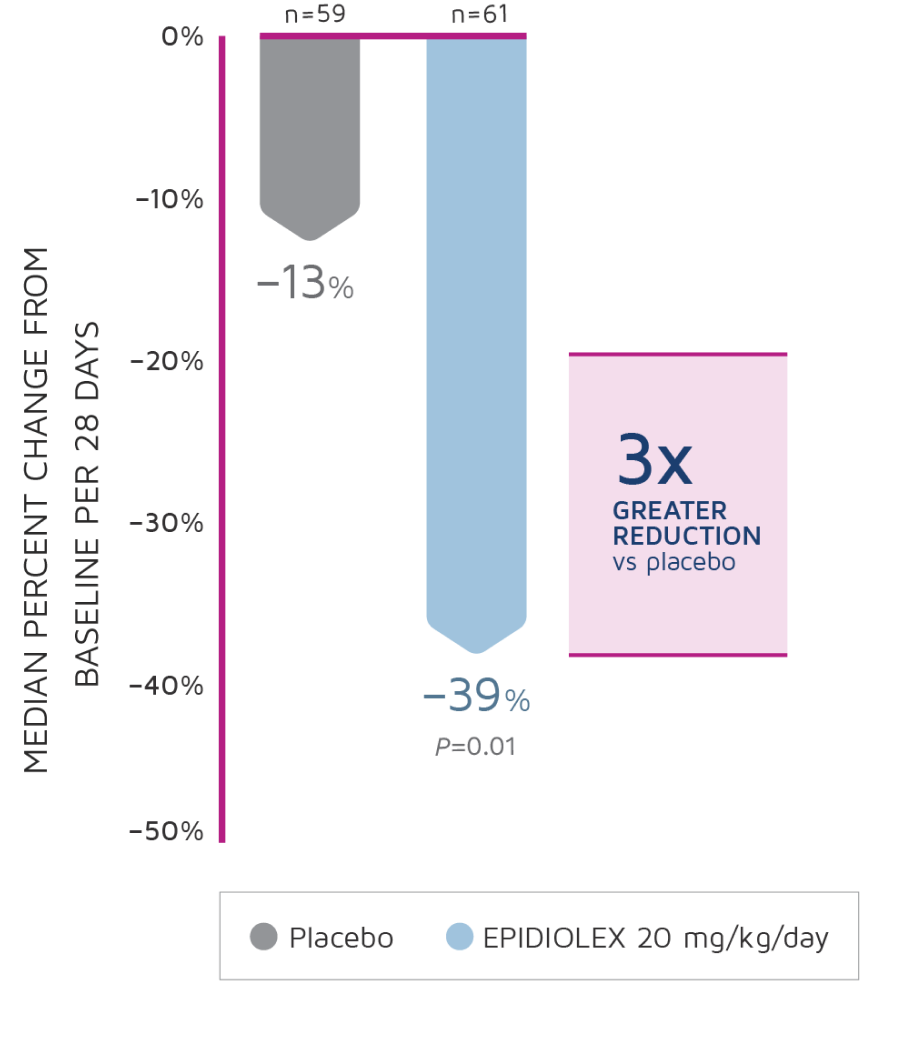
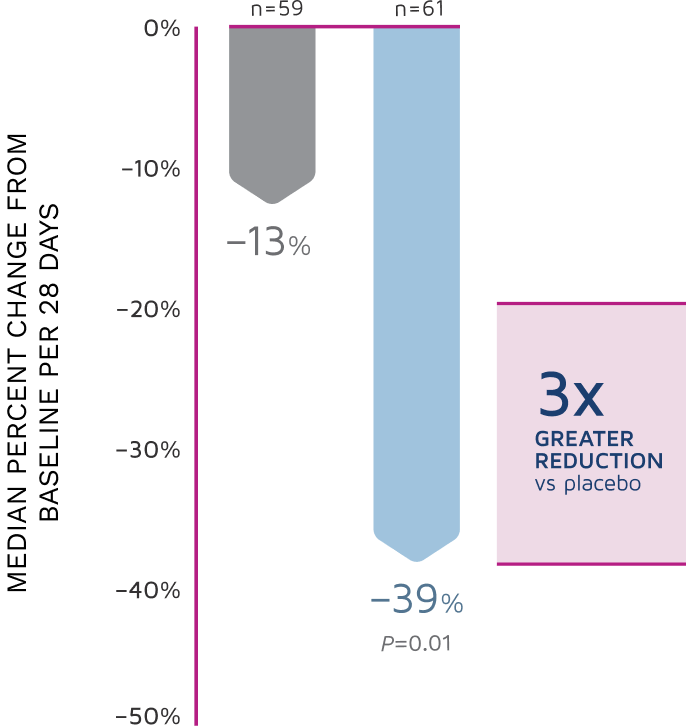

Results from the 14-week treatment period. Convulsive seizures included all countable atonic, tonic, clonic, and tonic-clonic seizures.
Patients at baseline1:
- Had previously tried a median of 4 prior ASMs
- Currently uncontrolled with a median of 3 current ASMs
In Study 3, 93% of patients were taking ≥2 ASMs at baseline and still experiencing a median of 13 convulsive seizures per 28 days.1
The most commonly used concomitant ASMs were:
65% clobazam |
57% valproate |
43% stiripentol
Seizure frequency reduction was reported as early as Day 10 in a post hoc analysis of the Dravet syndrome clinical trial.2
Recommended daily dosage is 10 mg/kg/day (5 mg/kg twice daily), with a maximum maintenance dosage of 20 mg/kg/day (10 mg/kg twice daily).
Administration of the 20-mg/kg/day dosage resulted in somewhat greater reductions in seizure rates than the recommended maintenance dosage of 10 mg/kg/day, but with an increase in adverse reactions. Patients with moderate to severe hepatic impairment require a dose adjustment.
LEARN MORE
Additional endpoints
EPIDIOLEX cut seizure frequency by ≥50% and ≥75% in more patients than placebo in the Dravet syndrome trial
RESPONDER RATES (≥50% and ≥75% REDUCTIONS IN CONVULSIVE SEIZURES FROM BASELINE)1
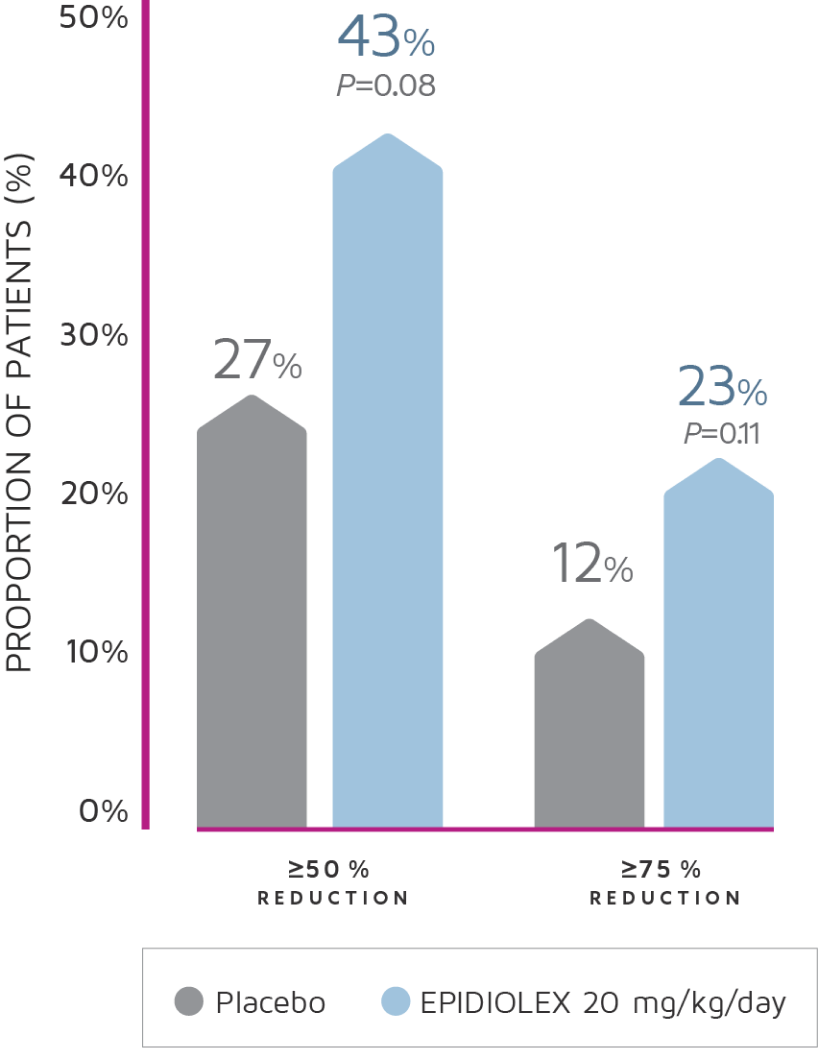
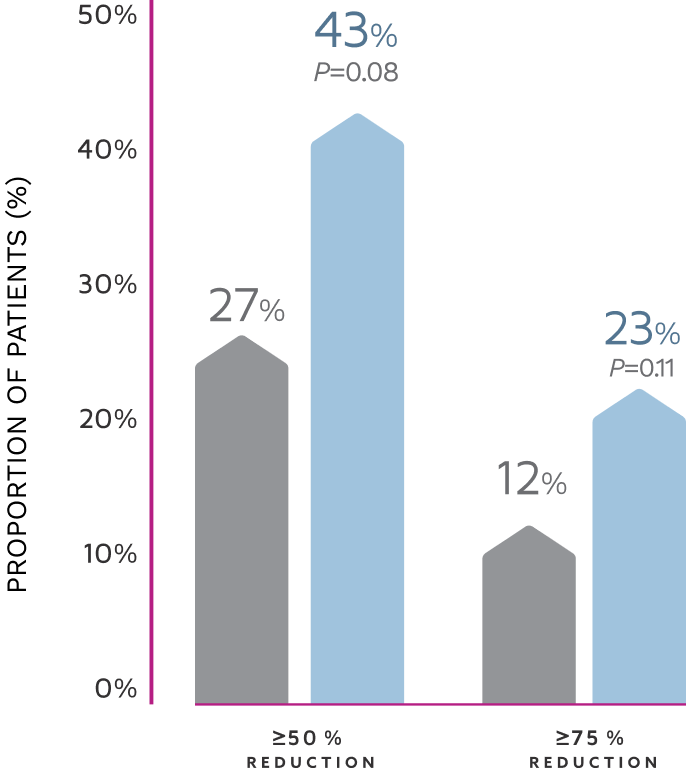

Results from the 14-week treatment period.
More patients achieved freedom from convulsive seizures with EPIDIOLEX than with placebo.
7%
EPIDIOLEX
20 mg/kg/day
0%
PLACEBO
3-year sustained reduction of convulsive seizures3
OPEN-LABEL EXTENSION: REDUCTION IN MONTHLY FREQUENCY OF CONVULSIVE SEIZURES
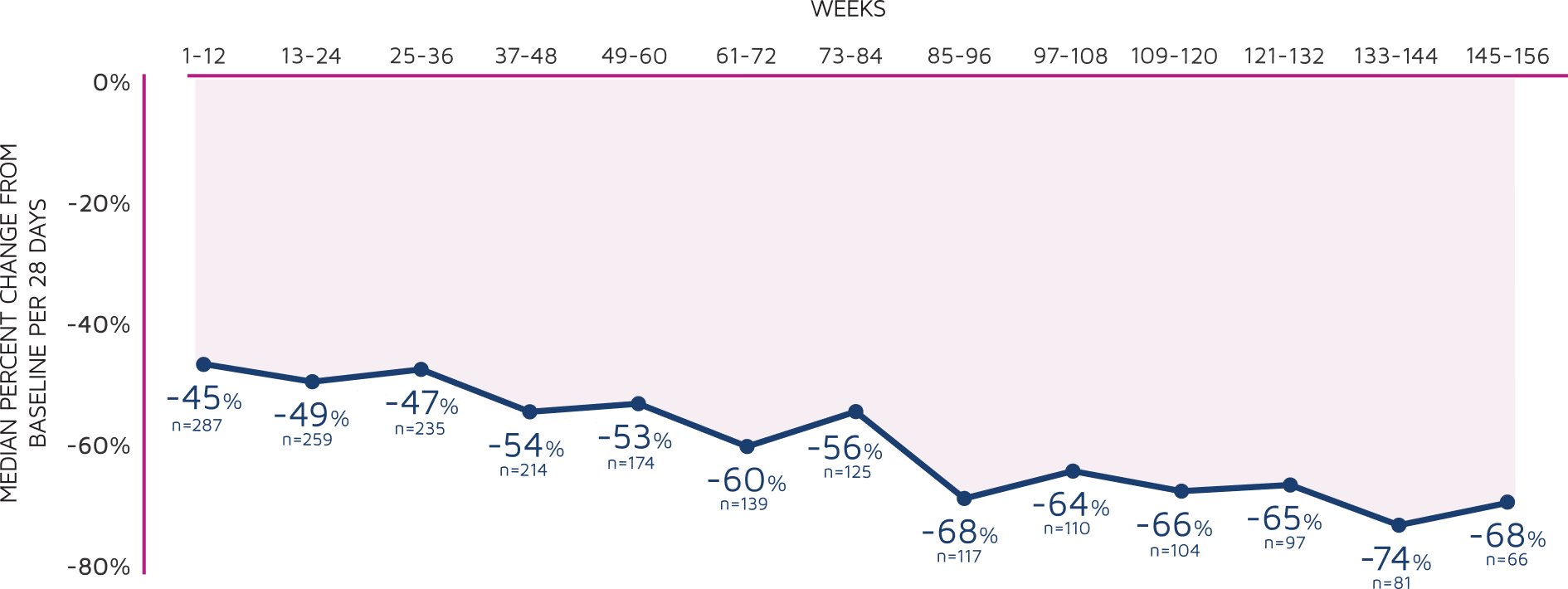
WEEKS

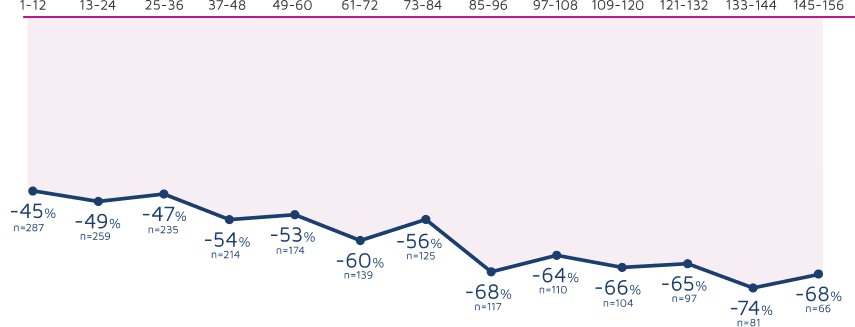
Decreasing n-values reflect a combination of discontinuations and rolling entry into the open-label extension trial.3
- Retention rates at 1, 2, and 3 years were 72%, 53%, and 45%, respectively3
- 8% (n=25) of withdrawals were due to adverse reactions3
- LOCF sensitivity analyses were carried out on change in seizure frequency data to assess the effects due to withdrawal of patients3
Adverse events
- The long-term safety profile of EPIDIOLEX in this open-label extension trial was generally similar to that observed in the EPIDIOLEX clinical development program
- Five deaths were reported in patients with Dravet syndrome, all of which were deemed unrelated to treatment by the investigator3
- In the open-label extension trial, titration to doses over 20 mg/kg/day was permitted. At higher doses, an increase in adverse reactions was observed3







